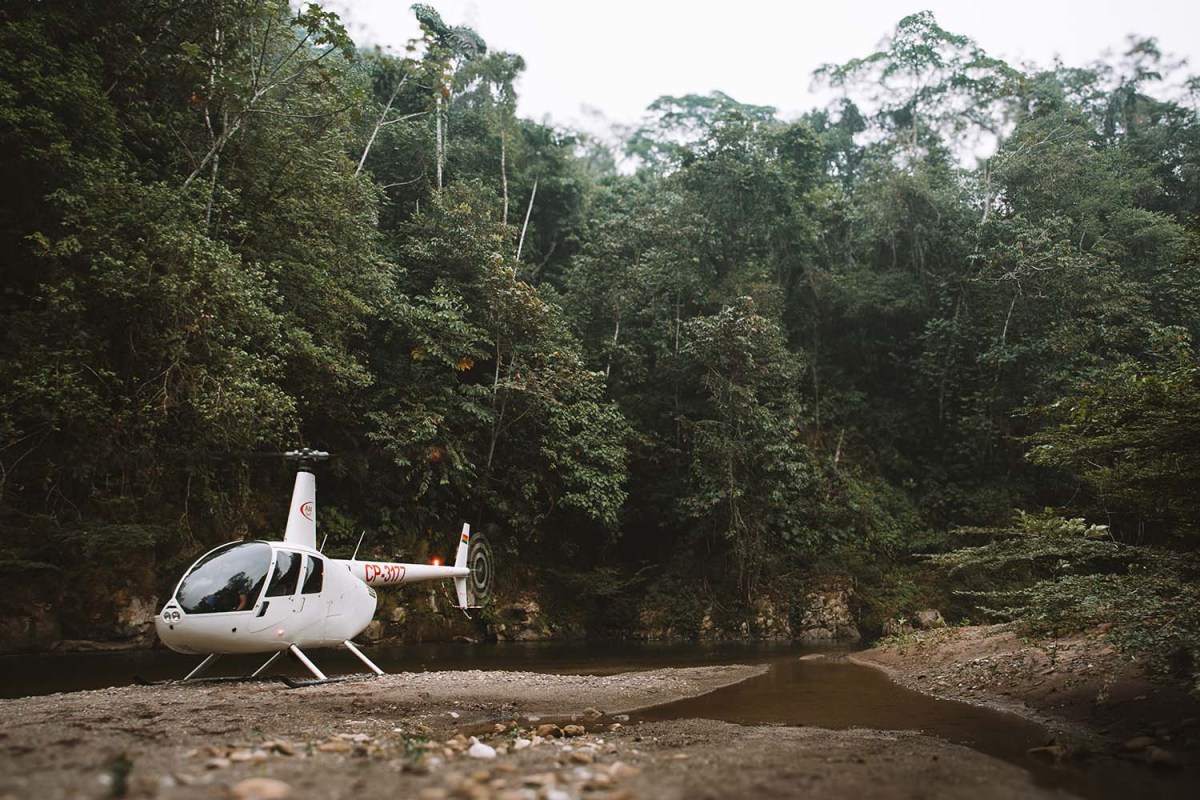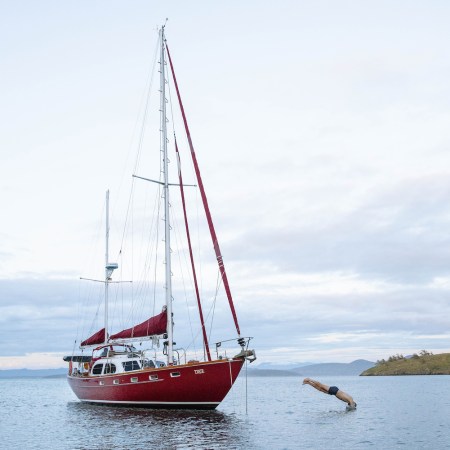We’re perched on rocks, watching an endless stream of jungle ants move along their highway while we mull over the strange places that fly-fishing careers take us, when the conversation pauses. Nearby howler monkeys hoot; chirping birds and an assortment of buzzing bugs that are all around (but we rarely actually see) create a background soundtrack suitable for a movie. But those noises have been with us all day, in one form or another. This is a new noise, a distant thumping thunder that’s slowly growing louder. We push to our feet and shrug back into our backpacks, gathering the rods.
The Uber’s here.
The little Robinson R44 Raven II helicopter pops around the corner of the canyon, stark white against the green camouflage of the Bolivian Amazon. It’s our daily commute, right on time as usual. Seasoned pilot Daniel “Cappy” steadily maneuvers the little four-seat helicopter in the tight jungle terrain, sweeping over us as if to say “Found you!” then swinging back around to come in for a landing, directed into a smooth settle on the small gravel bar by seasoned fly-fishing guide Nico. The R44 had dropped us many kilometers downriver this morning and this afternoon he’s followed the river, knowing we’ll be at one of the pre-scouted landing sites depending on how far we managed to hike and fish today.
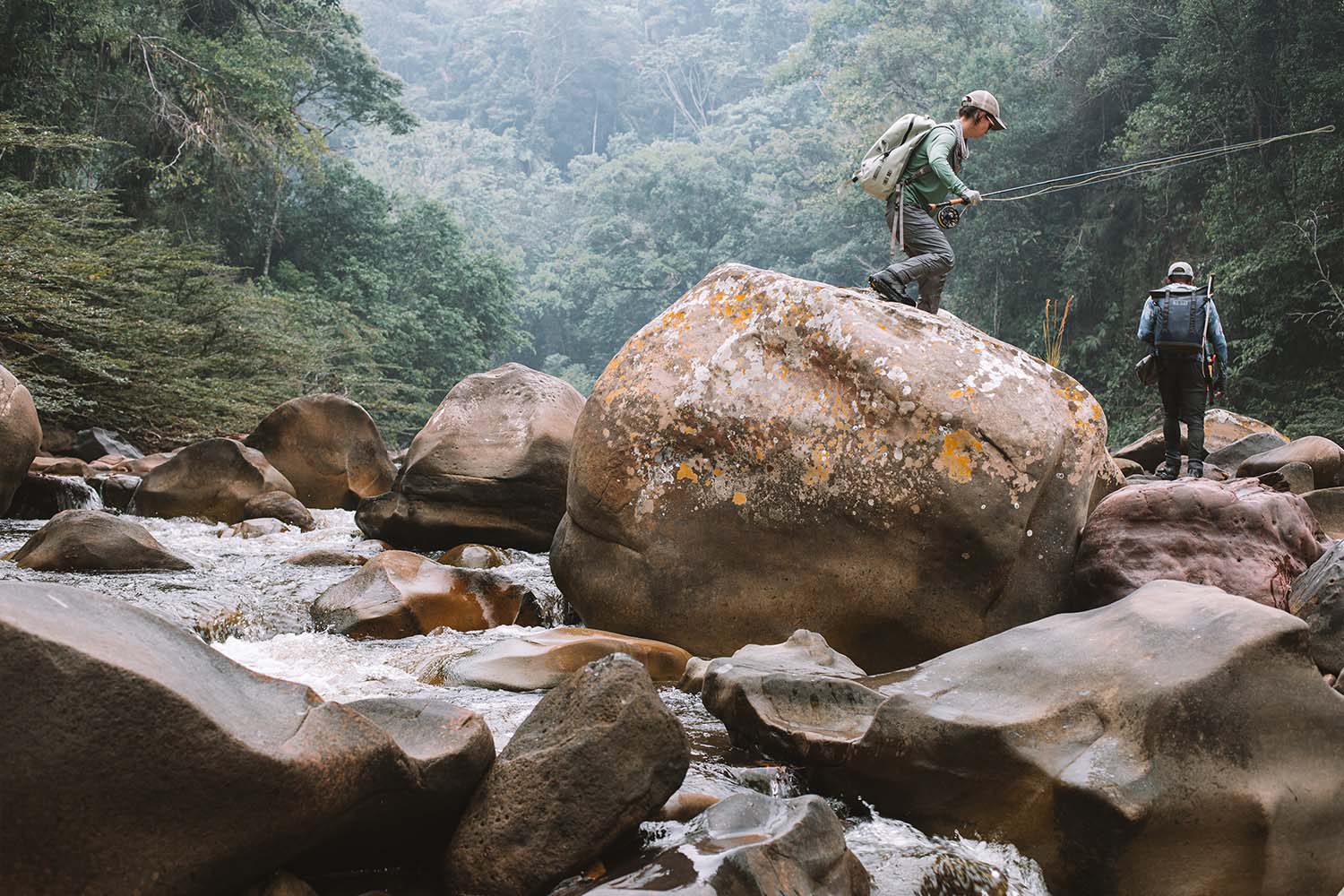
It’s been a good day. A good week. We’ve walked kilometers in high temperatures — the region is in a heat wave, the air filled with smoke from nearby Brazilian fires — but the trekking has not been without reward. The rivers accessible from our home base of the Tsimané Pluma Lodge are like the jungle which surrounds them: teeming with life. And around every bend we’ve hiked, new fishing opportunities have met us. Dozens of chances to cast to golden dorado — the king of the river and the trophy fish most anglers seek — as well as shots at pacú, yatorana, moturo and many other jungle species. I’ve come to Bolivia with high expectations, which have been met and exceeded time and time again.
I’m soaked from our most recent swim across a deep pool in the river and yet somehow still sweaty, but grin as I scramble into the R44, give Cappy a nod hello, and settle in for another ride back to the camp. I’ve ridden my fair share of helicopters around the world, but every time I climb into one I feel like a giddy kid all over again…some things in life truly never do get old.
Yes, it’s been a good week chasing gold in the Bolivian Amazon.
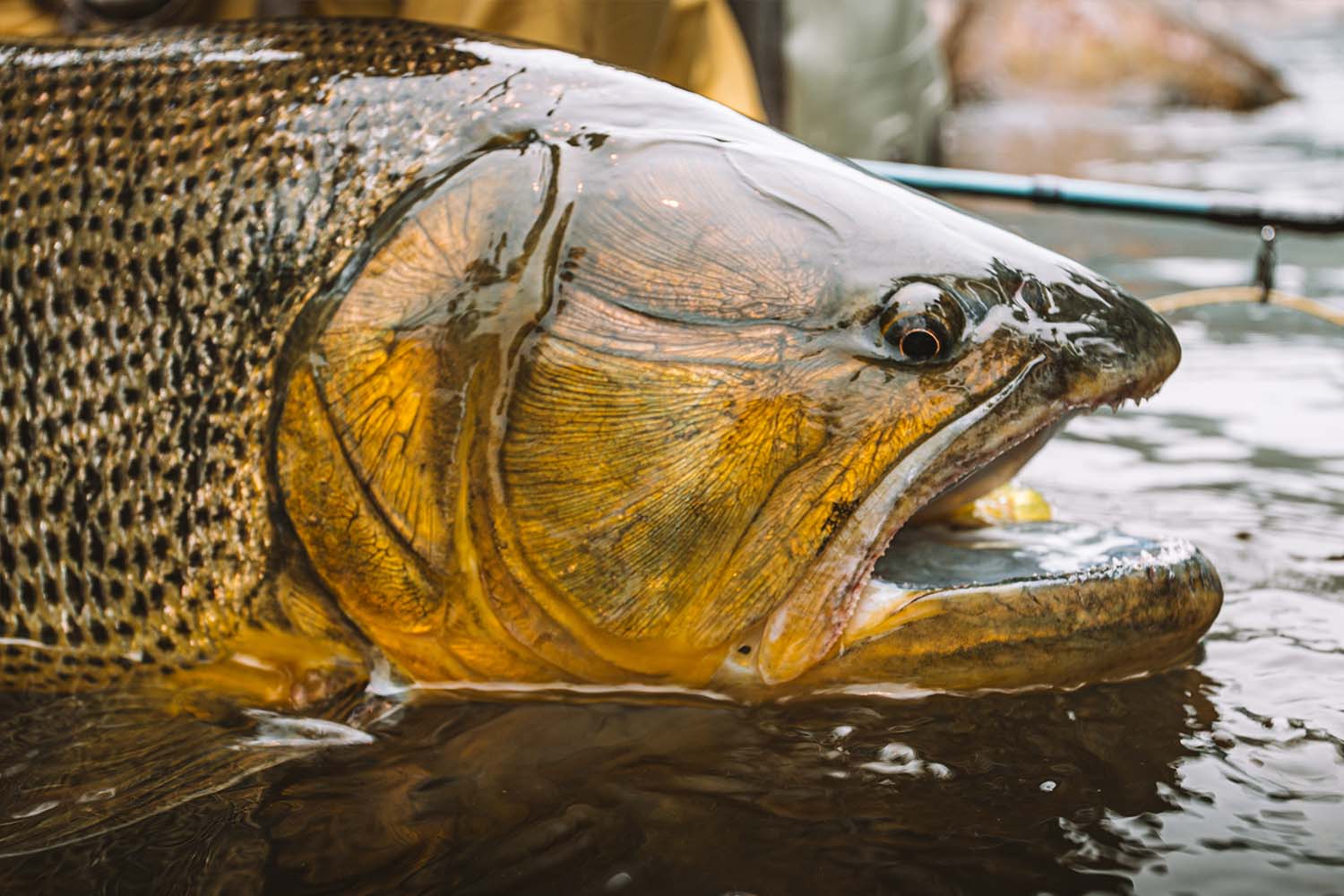
You’re Going Where to Fish?
When it comes up in conversation with the man sitting next to me on the plane that I’m heading to Bolivia to fly fish, I’m greeted with an inordinately blank look. Eventually he counters with a mumbled “But why?” and a look that tells me he’s attempting to map in his head where exactly Bolivia is.
Bolivia might not be on most destination anglers’ radars, but it should be. The country’s Amazon region is full of waterways; rivers in which the team at Untamed Angling has spent many years exploring and establishing fisheries. Founder and CEO Marcelo Perez has spent long years fostering the relationships with the government and indigenous communities which make the program here possible — and incredibly successful. This is, after all, a lodge in the middle of the Amazon jungle, and logistics here are anything but easy. But from the traveler’s perspective, things run seamlessly.
After a long series of flights from Montana, I arrive at Viru Viru International Airport in Santa Cruz de la Sierra, Bolivia. After obtaining my visa and grabbing my bags I’m greeted by Tsimané’s charismatic transfer host Zoltan, who escorts me to Los Tajibos Hotel, where I’ve planned a couple days of R&R before heading into the jungle. I lounge by the pool, catch up on emails, find a favorite local coffee shop. Then before I know it, it’s time to pack up and make the trip to Pluma Lodge.
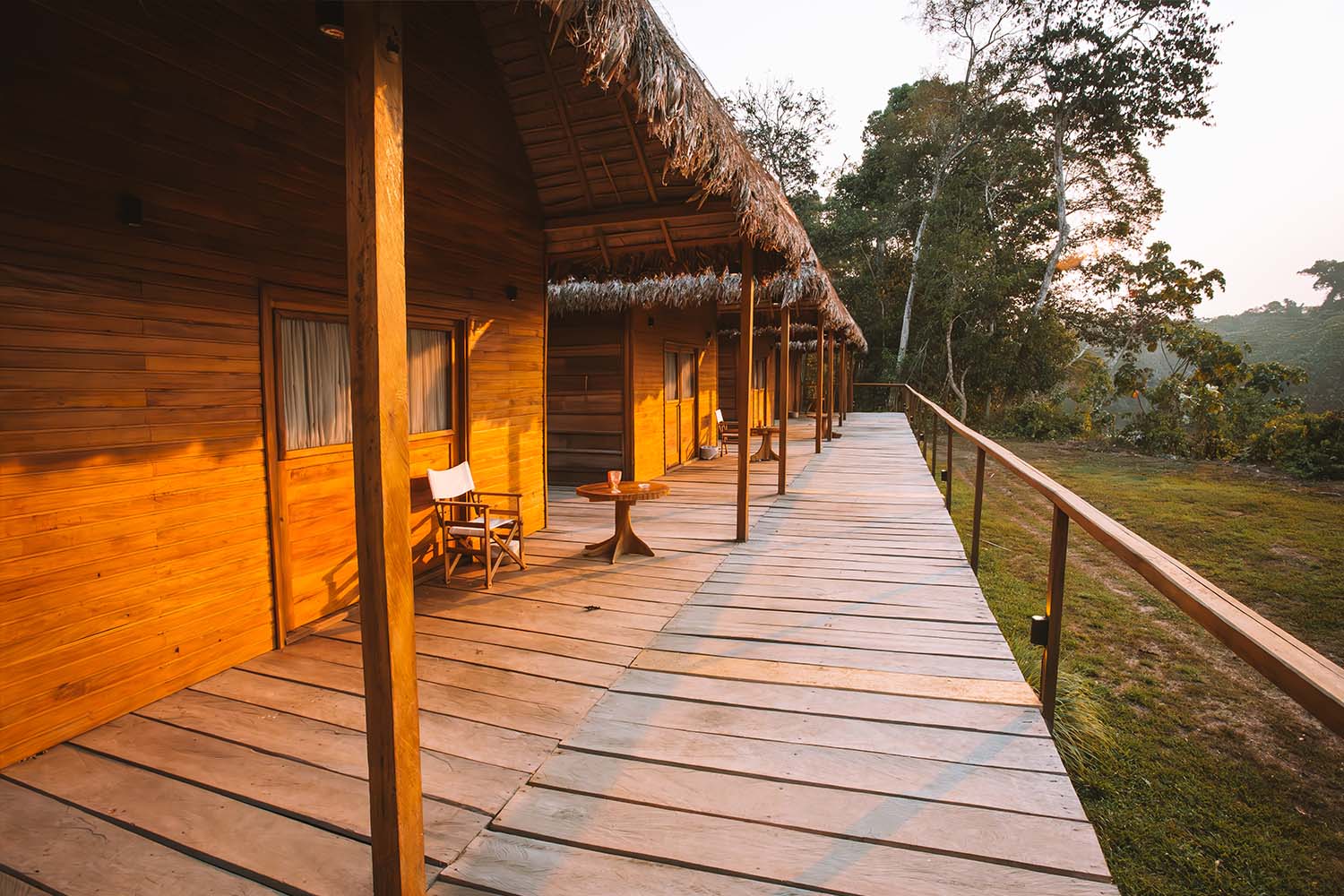
Life at Tsimané Pluma Lodge
The flight is about an hour from Santa Cruz to the village of Oromomo, the largest village in the Isiboro Sécure National Park and Indigenous Territory, home to about 100 families. We land on a grass airstrip and are greeted by the villagers and the Tsimané Pluma Lodge team, a transfer orchestrated smoothly by Vicente Lopez Lorente, the “Prime Minister” of Pluma. We then pile into long, slim boats and head upstream for another hour to what will be home base for the coming week.
Considering we’re in the middle of the jungle, Pluma is downright luxurious. Anglers thrive in single-room accommodations, complete with a shower (hot water!), comfy bed with mosquito netting and ensuite bathrooms. The common area is overseen by hostess Valeria, who is magically always ready with an appetizer and a cold drink each day when we return from fishing. The daily routine is blessedly simple here in the jungle: wake, eat breakfast (including miraculous jungle cappuccinos made by Vicente), gear up, then head to the helipad to depart for the day of fishing. Evenings are low-key, spent relaxing and enjoying fine dinners after a day hiking and fishing. It’s a complicated dance behind the scenes, but the team makes it look easy.
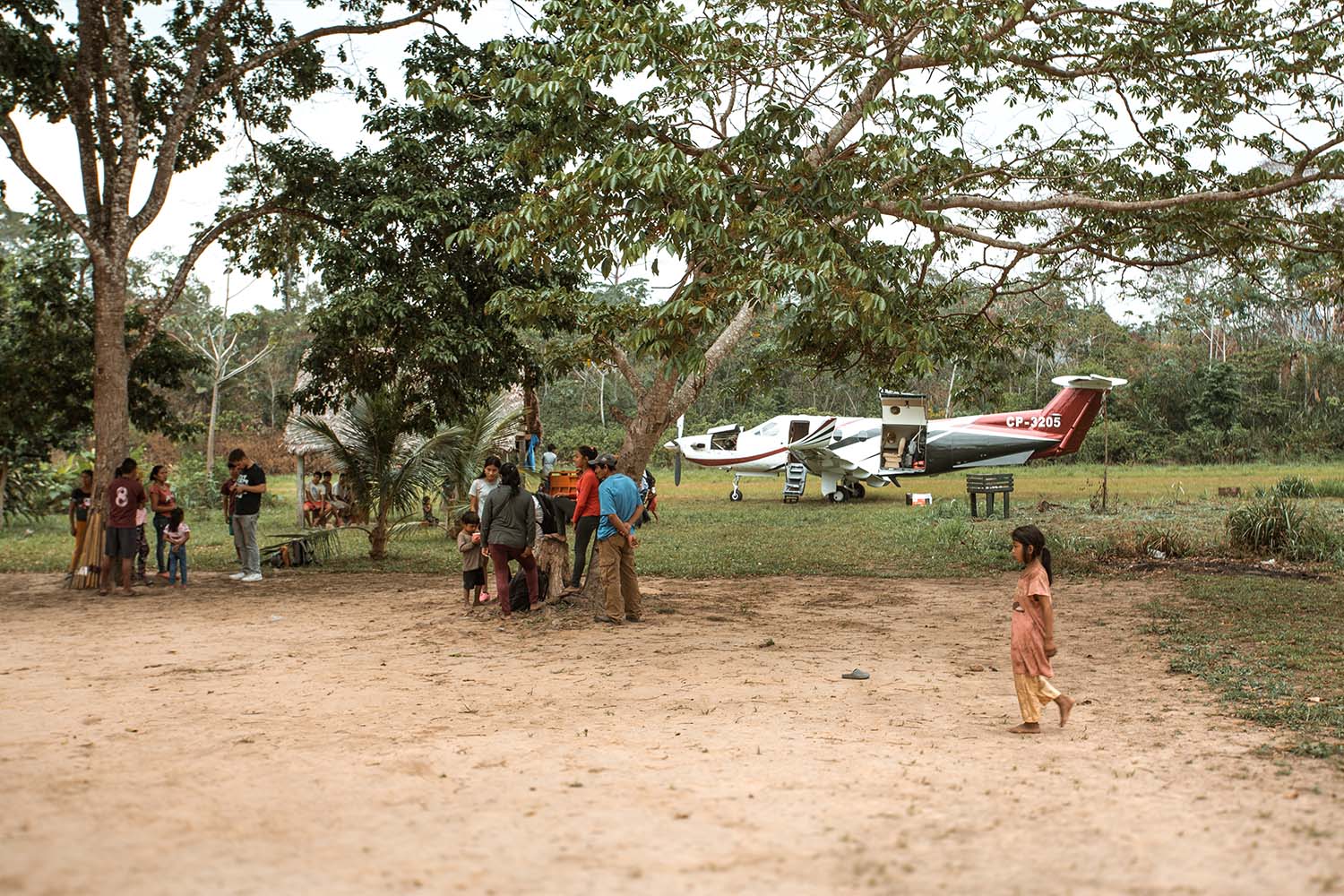
Heli-Fishing 101
The heli-fishing program at Tsimané premiered in 2022, and has just wrapped its second successful season. Accessing jungle rivers by helicopter might seem like a strange idea, but the access afforded by a short flight in the R44 saves what would otherwise be days in a boat pushing upriver — there are no roads here. The helicopter drops anglers at a designated point in the morning; fishermen walk and fish the day away and are then picked up in the evening at a second point.
The little Robinson R44s are perfect for this kind of work. Compact and able to land in incredibly small places, the helicopters comfortably fly four people: two anglers plus the guide and the pilot. Our pilot Cappy has flown in the “Diablos Rojos,” a Bolivian Air Force unit which moves narcotics police troops to hard-to-reach areas by helicopter, and occasionally flies the Bolivian president’s helicopter. Suffice to say, he knows what he’s doing.
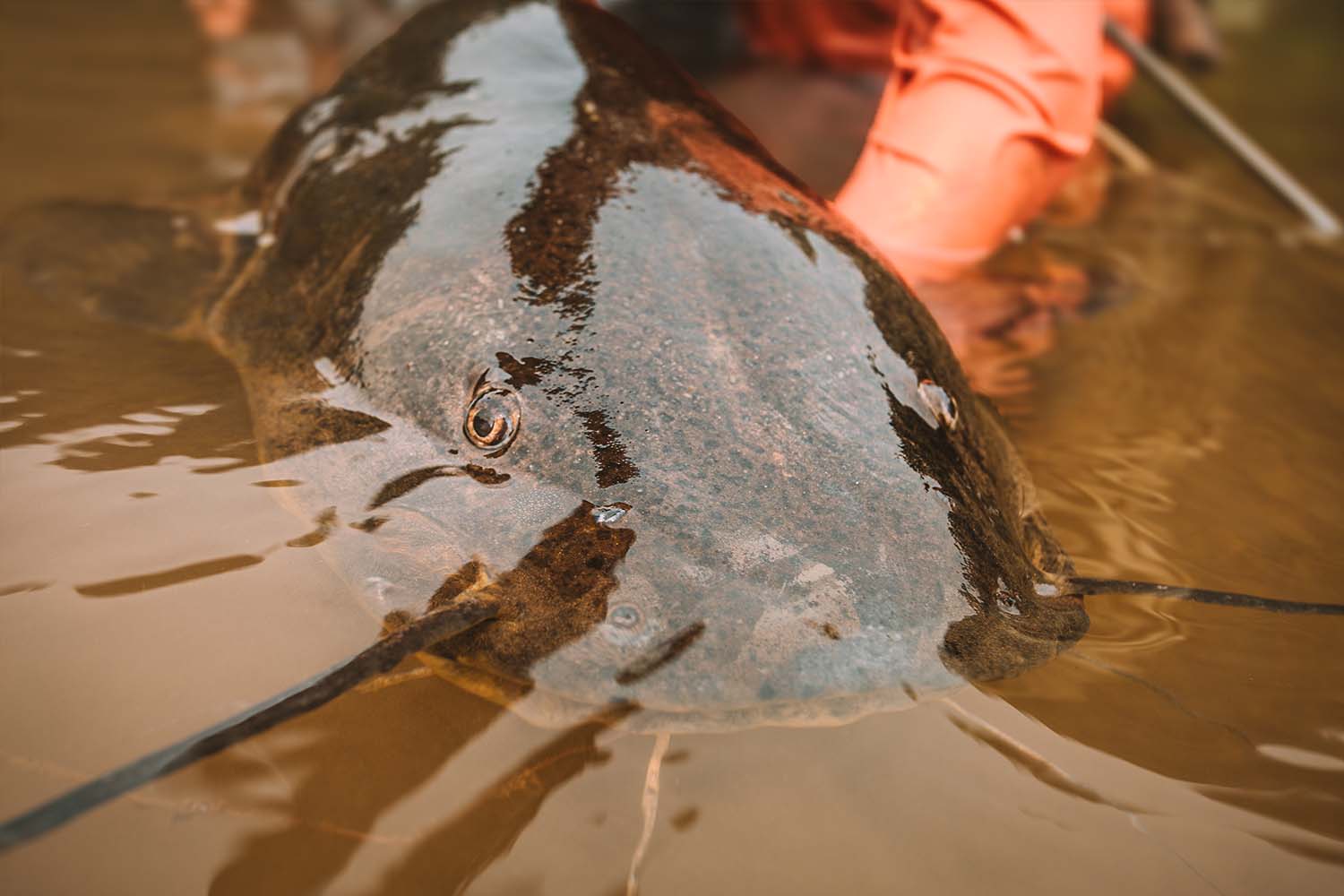
The Fishing
The jungle itself is an adventure, but really we’re here for the fishing. Pluma Lodge is surrounded by prime waterways, home to golden dorado, the trophy fish of the jungle. Dorado sport broad heads, gleaming scales, and rows of teeth that make wire tippet a must. My favorite fish ends up being the pacú, a dark-colored, oddly-shaped fish related to the piranha, with discomfiting human-like teeth. Large catfish, including the moturo, and other gamefish such as the aggressive yatorana live in these waters as well. It’s a veritable playground for anglers, full of exotic species that look like something a five-year-old drew for a school project.
It’s a fishery that defies expectations, tests fishing skills, and presents opportunities — and challenges — unlike any I’ve seen in fifteen years of fishing on six continents.
Which is exactly where the expertise of the guide team comes into play.
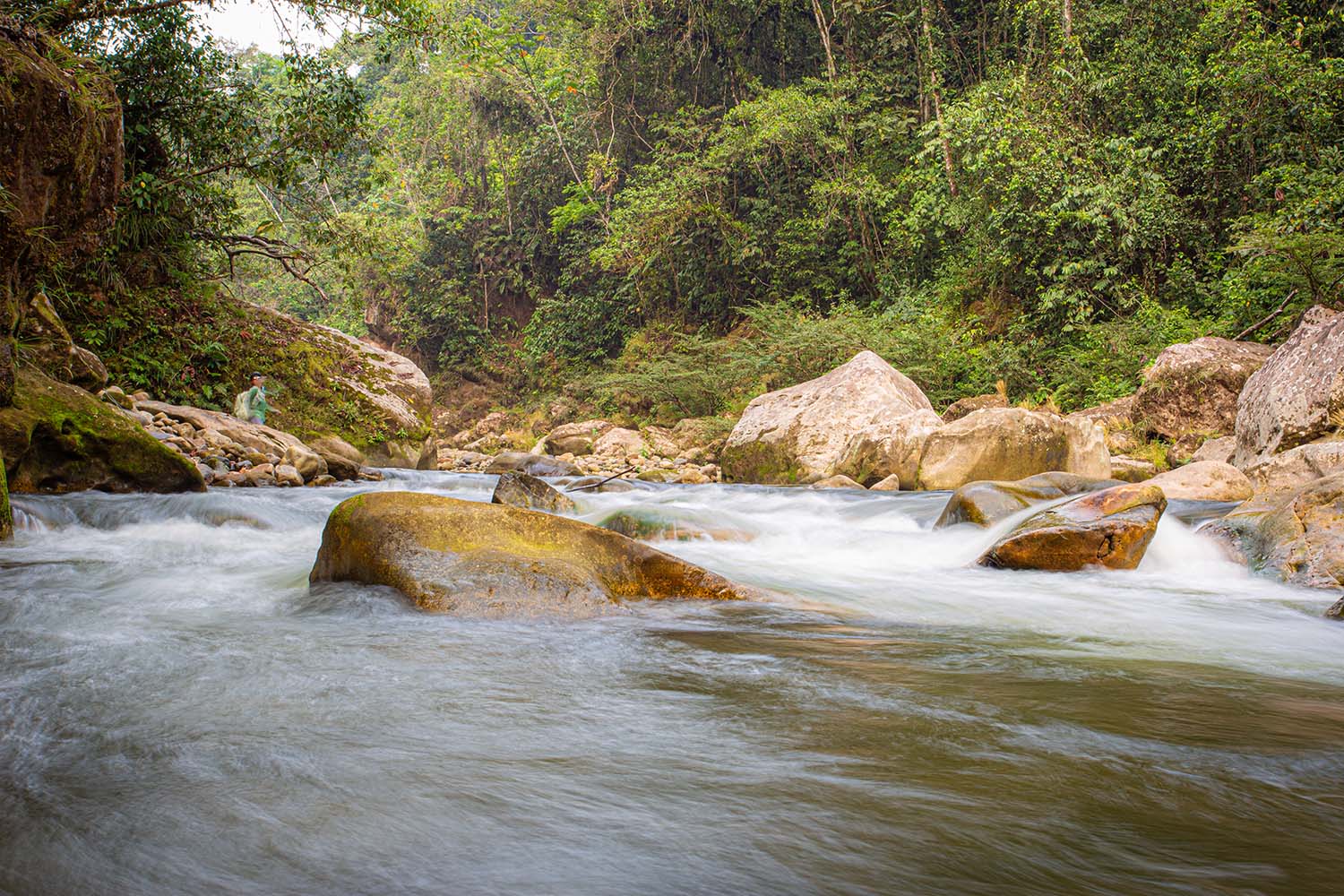
Guiding remote rivers for a five-month season in the middle of the jungle is no easy task, but the Tsimané crew has gathered a veritable A-Team of guides for its jungle operations. Vicente, Nico, Fabi and the rest of the crew come prepared each day with a master plan, are flexible in case of contingencies, and keep a careful eye on their anglers to ensure everyone stays healthy in the jungle. They’re a solid group of guys who are fishy as hell and a joy to be around — which is not something I can say of every guide team I’ve worked alongside. It takes a savvy, capable guide to work a season in these waters, and this crew exceeds expectations.
Nico tied up some special flies for the last few days, crafting bright pink and purple baitfish patterns. Colors a girl could appreciate. Turns out, the dorado appreciated them too.
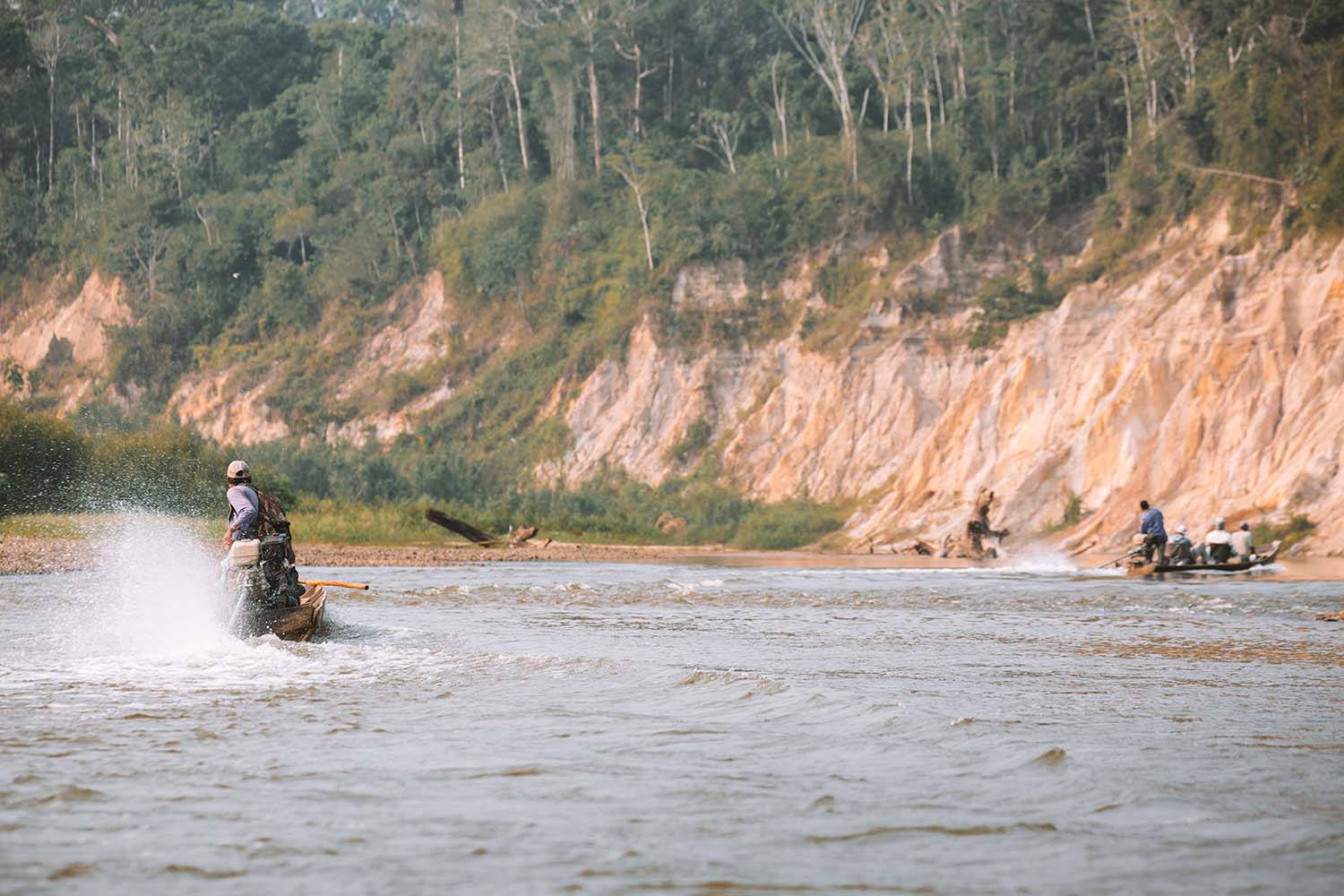
Jungle Magic
On the fourth morning we ride the R44 a little longer, swinging through canyons as we scout out potential pickup spots. We’re fishing new terrain today — hiking further upstream than the team has ever fished — and need to have a few evac points in mind. Cappy whirls the helicopter through the narrow terrain with ease, Nico in the copilot’s seat marking potential landing zones on his phone. Once we have a plan, we swing around and head back to the drop-in point.
It’s going to be a good day.
We hike, climb, and swim more than eleven kilometers; slow going on the slick rocks with no river bank on which to move quickly. But the fish are here, dorado in the heads of long pools right where they should be. Yatorana cruising along the waterways, prowling for something to eat. It’s low water, hot conditions and technical fishing, but with Nico’s hot pink creation on the end of the line, I’m able to hook into my second-biggest dorado of the trip, as well as countless smaller dorado and yatorana.
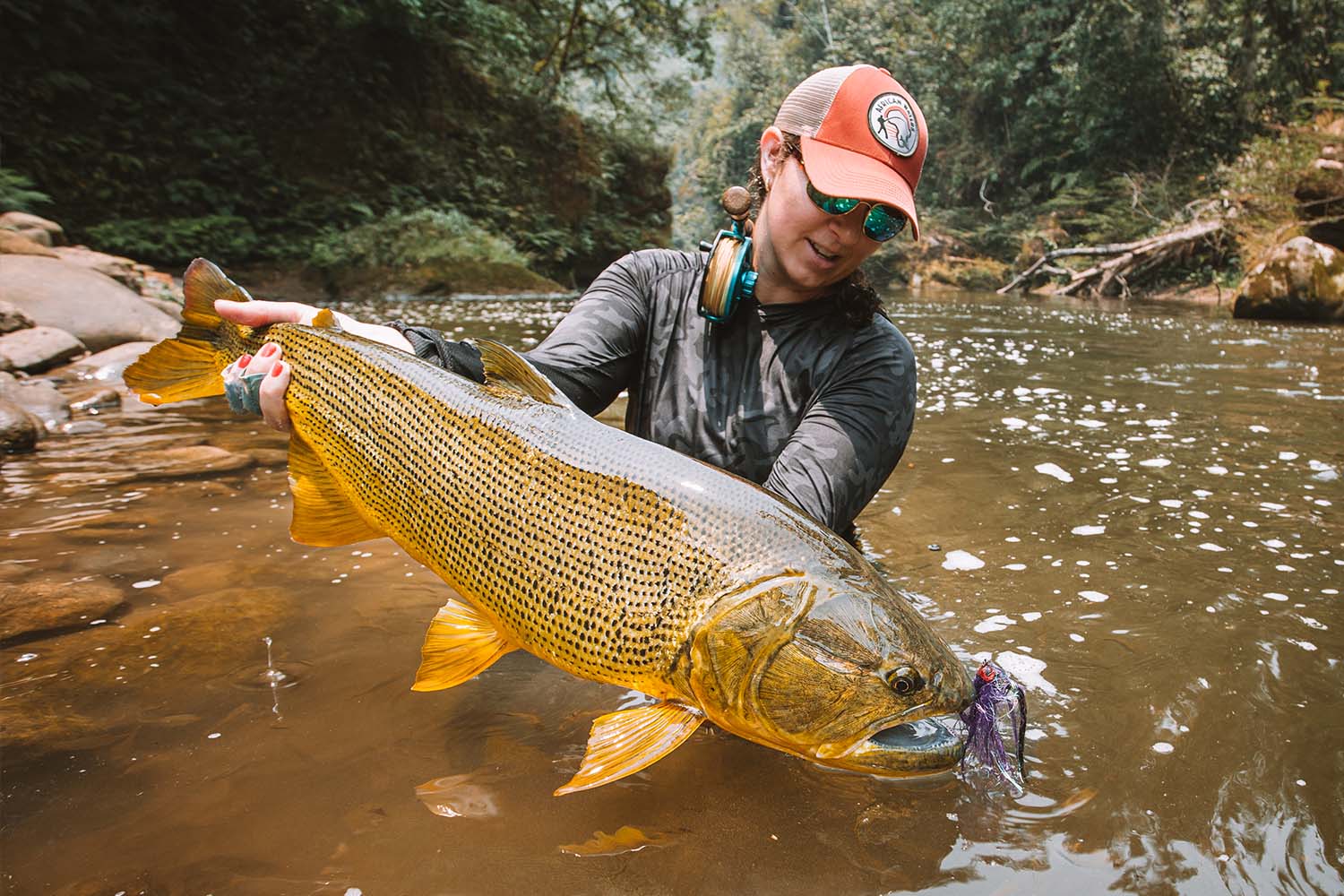
Howler monkeys screech at us as we wade upstream, barely visible in the thick canopy. We’re hip-deep in murky water when a large splash sounds from the bank ahead, too large to be a fish. My pulse ratchets up for a moment, watching the water, until finally a blob-like creature with a strange snout emerges on the other bank, climbing into the mud ungracefully. It’s a tapir; a large, herbivorous mammal with bad eyesight and a funky figure. He ambles along the bank for a while before he either spots or smells us, and turns to gallop into the thick undergrowth. He vanishes within three seconds, swallowed by the jungle.
I feel like a kid again. A wet, tired kid with back pain and blisters on my fingers, but a madly happy one. This isn’t a place for the fainthearted; it’s a fishery that demands effort and if you put that effort in, you’ll be rewarded a hundredfold. The very concept that Tsimané has embraced here — the ability to access parts of the jungle such as this one to trek around and chase these incredible fish with this incredible team — is staggering. It’s an operation run smoothly and capably in a complicated part of the world, and home to some of the most mind-blowing fishing I’ve yet to see.
As I slide down another rock and drop down into the water preparing to swim another pool, I look back up at long vines draping overhead from a massive, ancient tree and grin. Then I kick off into the water, muscles working familiarly as I follow Nico upriver once again. I’m sure parts of this jungle will be around long after we’re all gone, and there’s something pretty damn comforting in that.
This article appeared in an InsideHook newsletter. Sign up for free to get more on travel, wellness, style, drinking, and culture.
